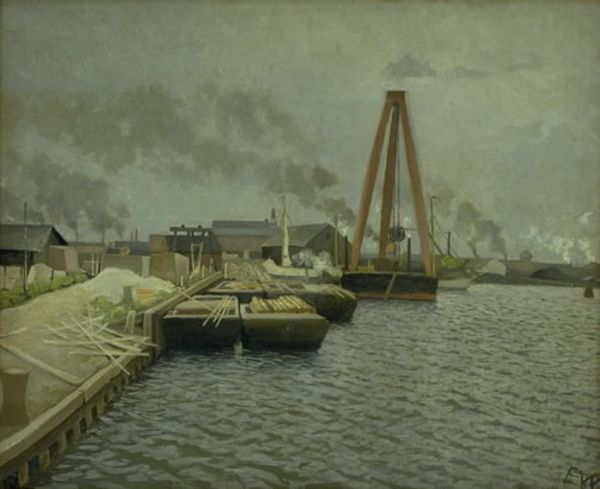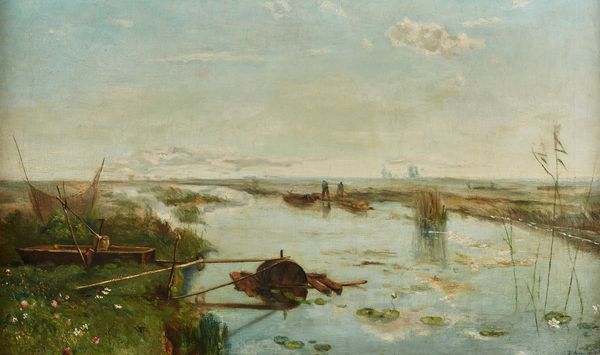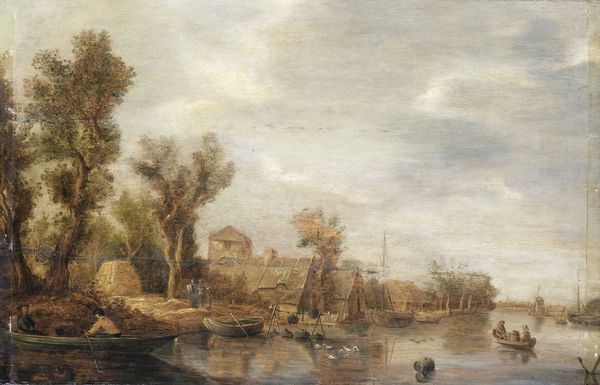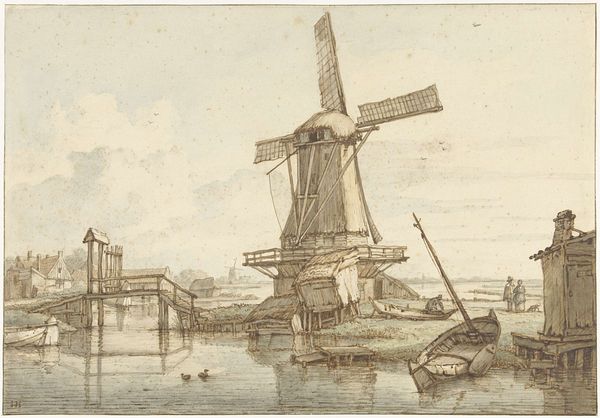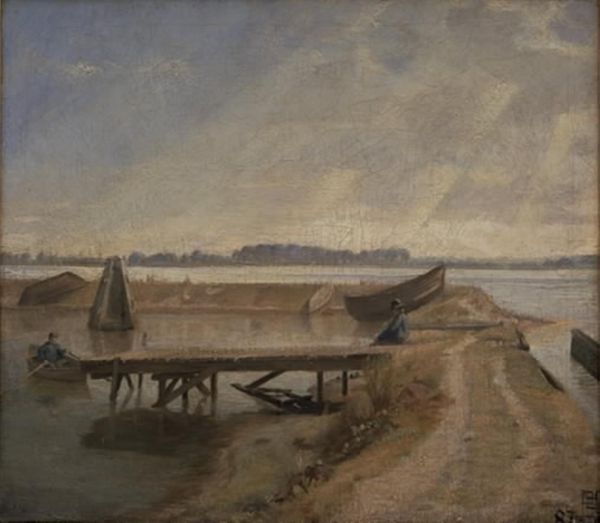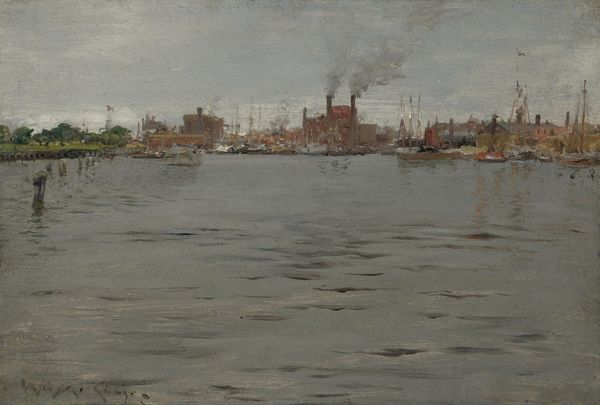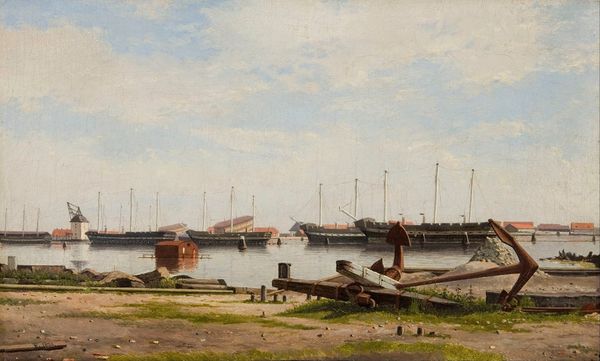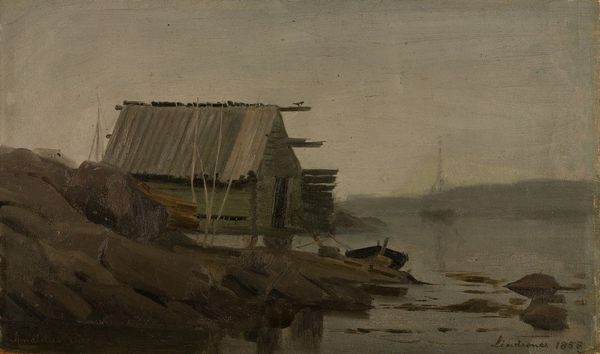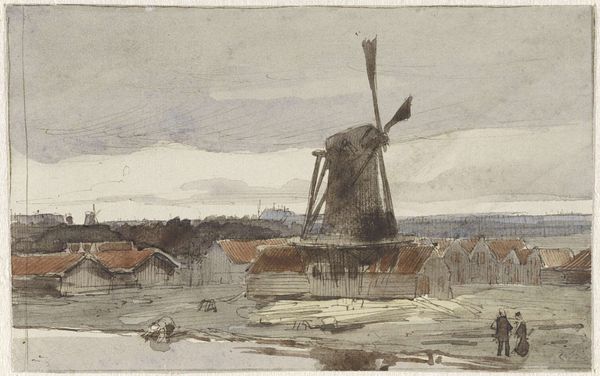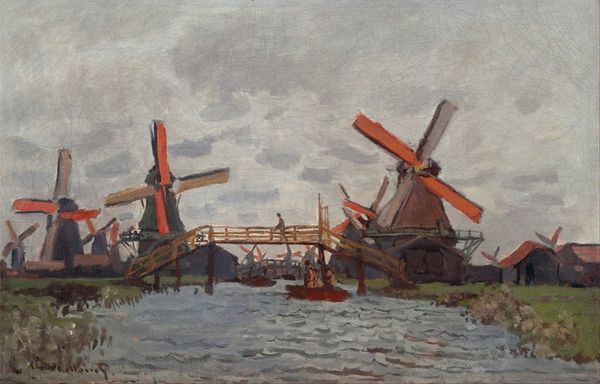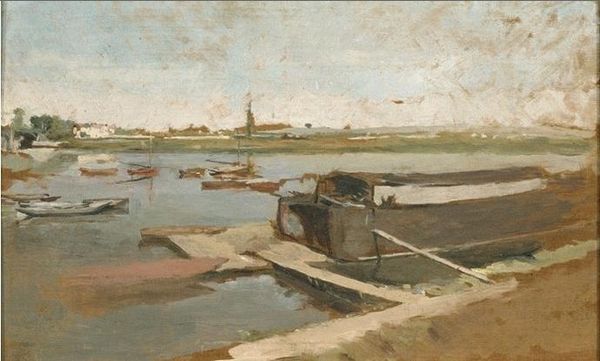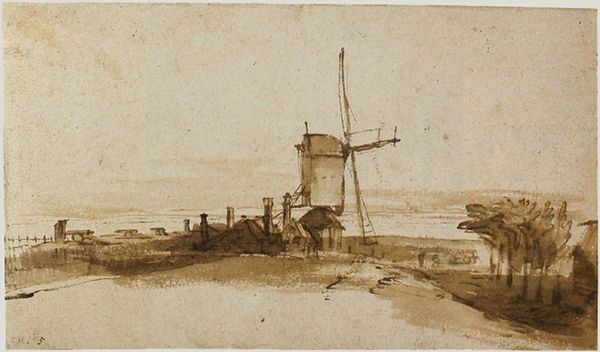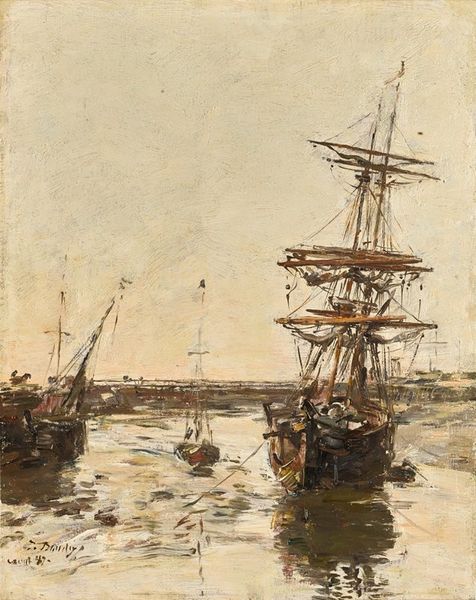
Copyright: Public Domain: Artvee
Editor: This is Amaldus Nielsen’s "Garveriet, Mandal," painted in 1858 using oil paint in a plein-air style. I'm immediately struck by how the presence of the windmill seems to dominate the landscape. What do you see in this piece? Curator: I see a visual narrative deeply rooted in the tensions of industrial development versus nature. The windmill, ostensibly a symbol of progress, stands in contrast to the natural landscape and potentially disrupts a previously sustainable way of life in Mandal. What narratives does this artwork reveal about the rapid changes experienced in 19th century Norway? Editor: That’s a fascinating take. I hadn’t thought about it in terms of conflicting forces, just the pure visual representation. How would you interpret the textures? The wood and the water are so palpable. Curator: Consider what those tangible textures communicate beyond mere representation. Is Nielsen perhaps hinting at the labor involved, the exploitation of natural resources? Oil paint, as a medium, has historical associations with wealth and power. How does the use of oil here contribute to a broader understanding of socio-economic dynamics at play during industrialization? The painting technique itself tells a story of resource utilization. Editor: So, the very act of painting becomes part of the commentary. That makes me see the stacks of wood in the foreground very differently too – less like picturesque details, and more like raw materials for the grinder. Curator: Precisely. Nielsen, perhaps unwittingly, gives us a window into the commodification of nature and the societal shifts resulting from industrial advancement. Thinking about who had access to these landscapes, and who profited, allows us to view a beautiful landscape with a sharper, more critical eye. Editor: That's definitely changed my perception of this artwork. Thank you! I can see now how landscape painting, which I took at face value, can carry many layers of meaning, especially related to industrialisation and capitalism. Curator: Indeed. It's about encouraging conversations. It’s the blending of artistic expression and cultural understanding that makes art history so meaningful.
Comments
No comments
Be the first to comment and join the conversation on the ultimate creative platform.
